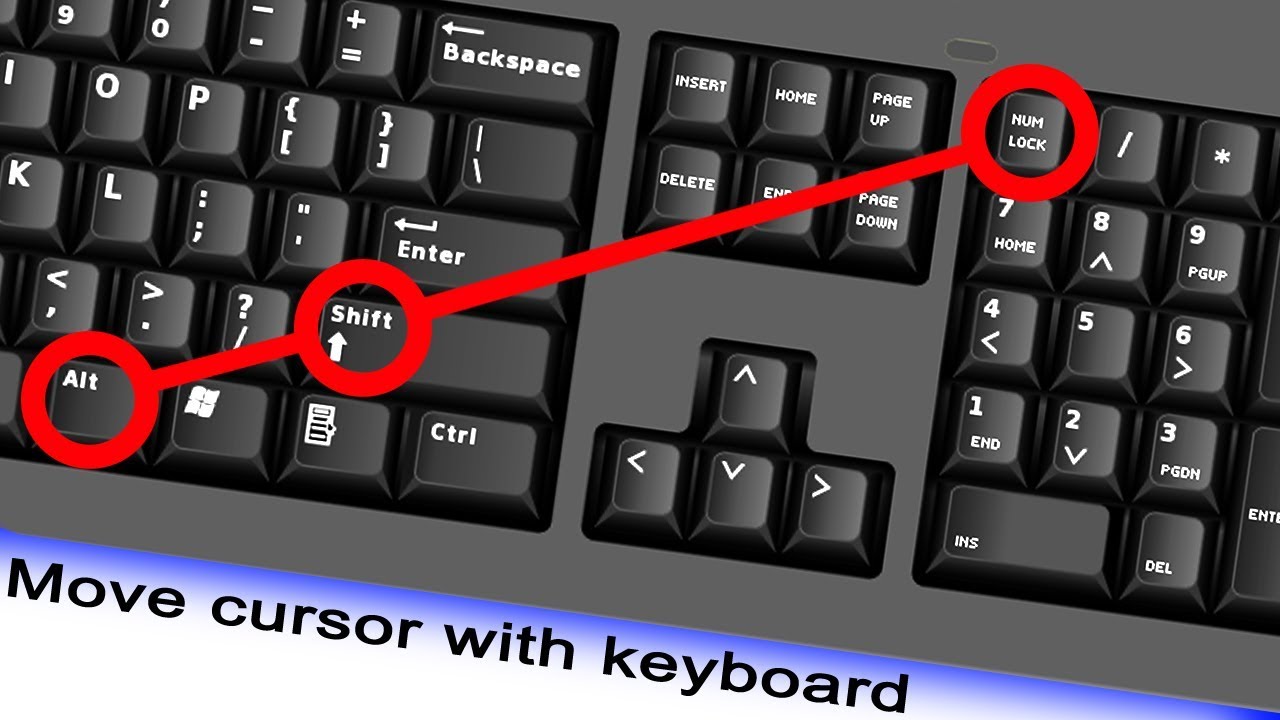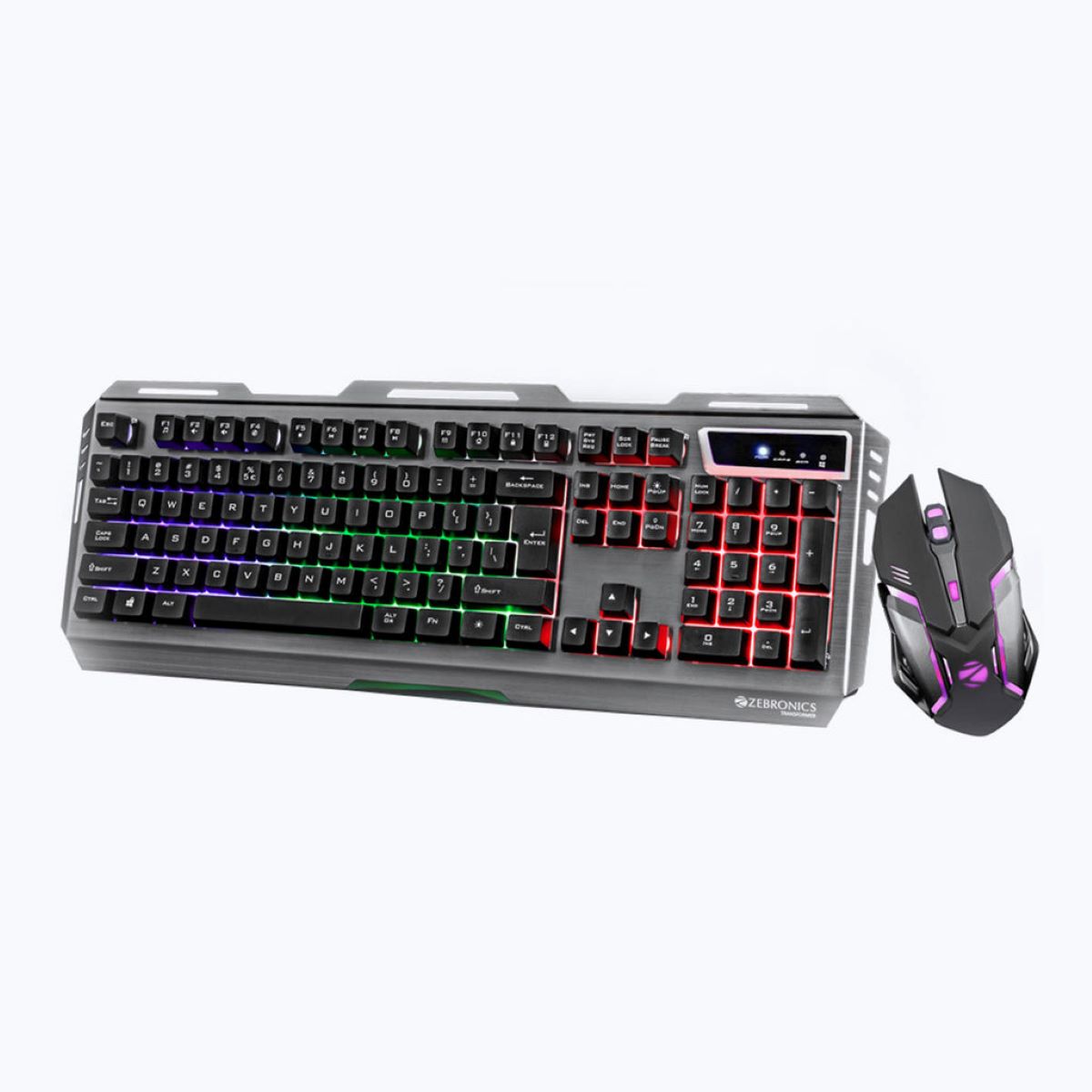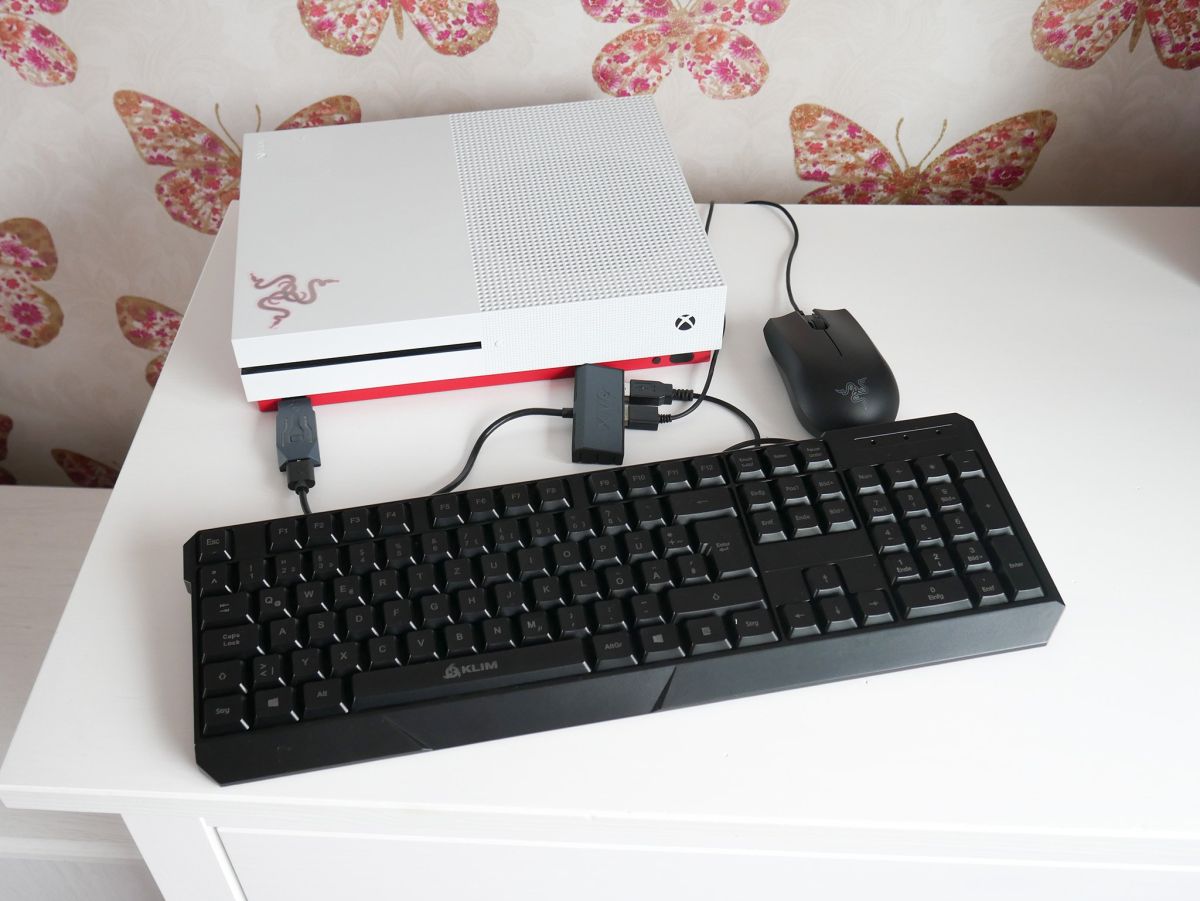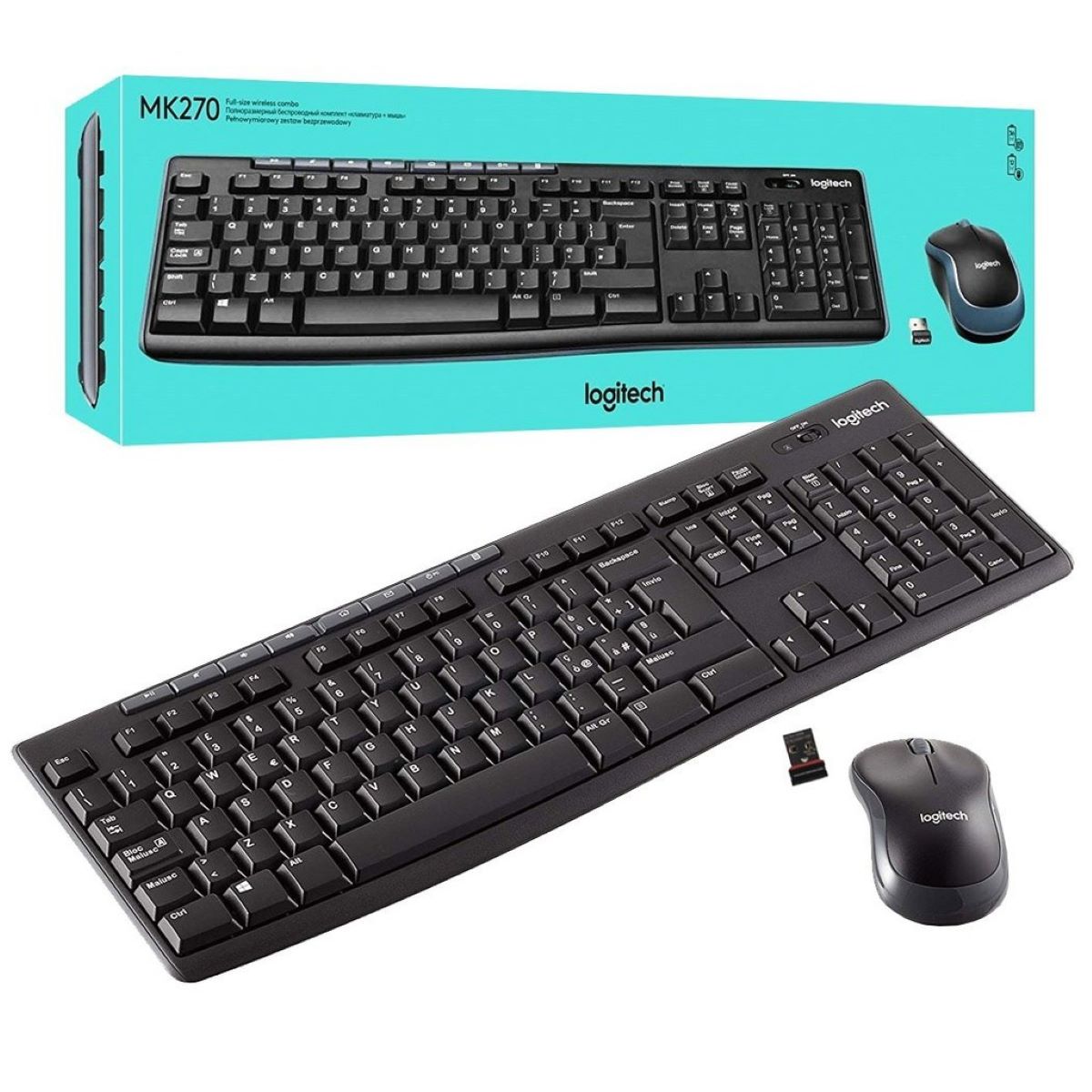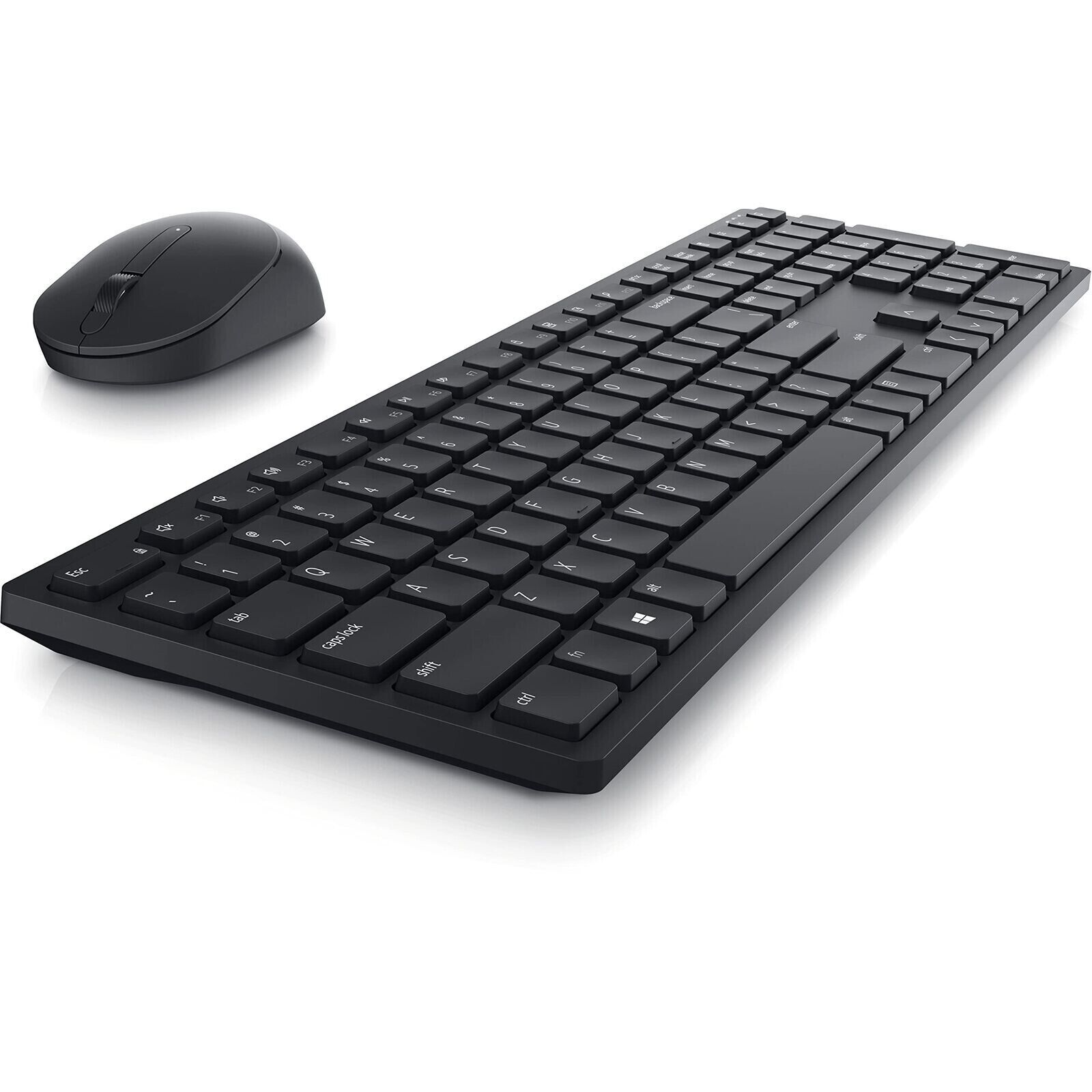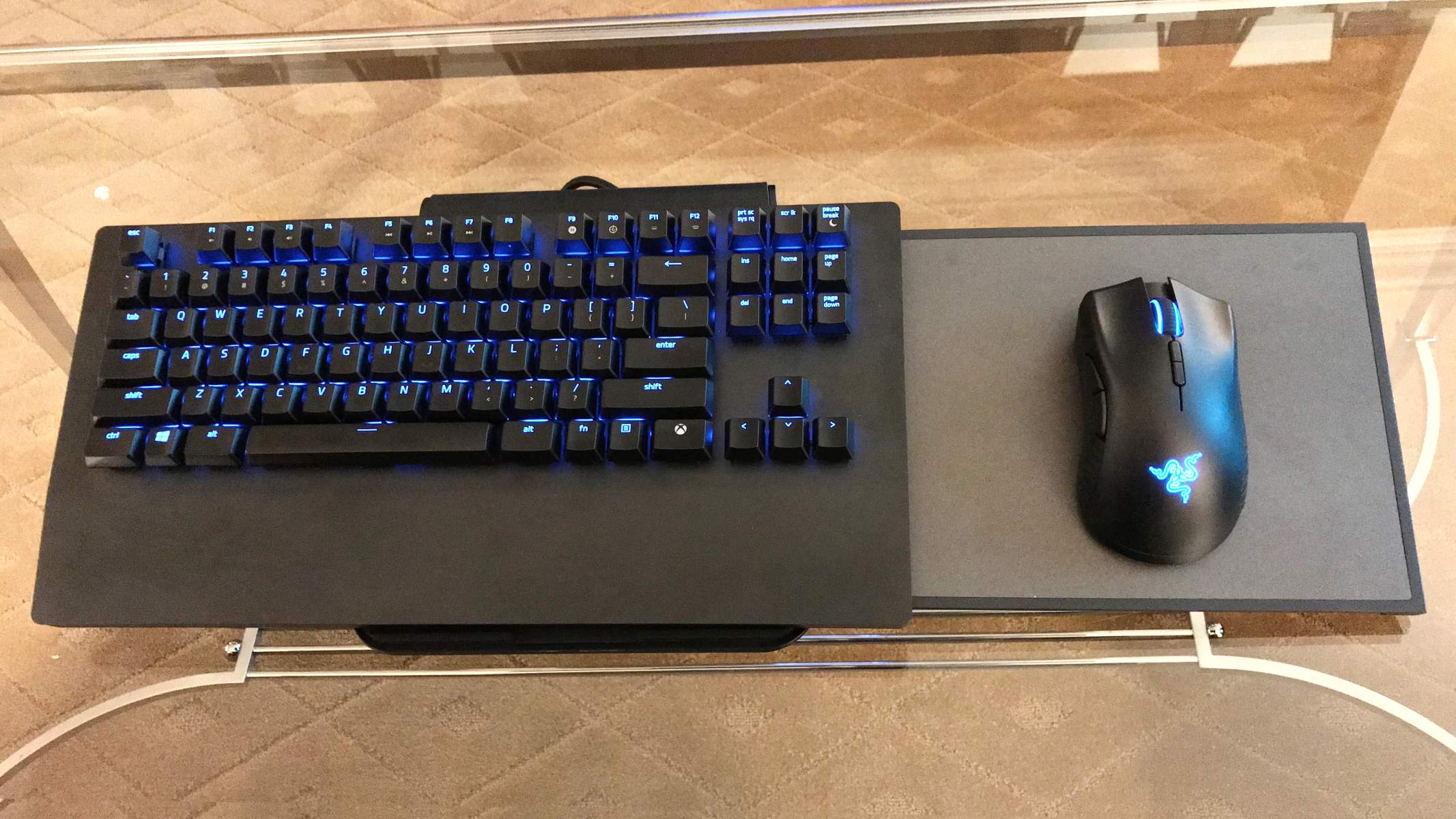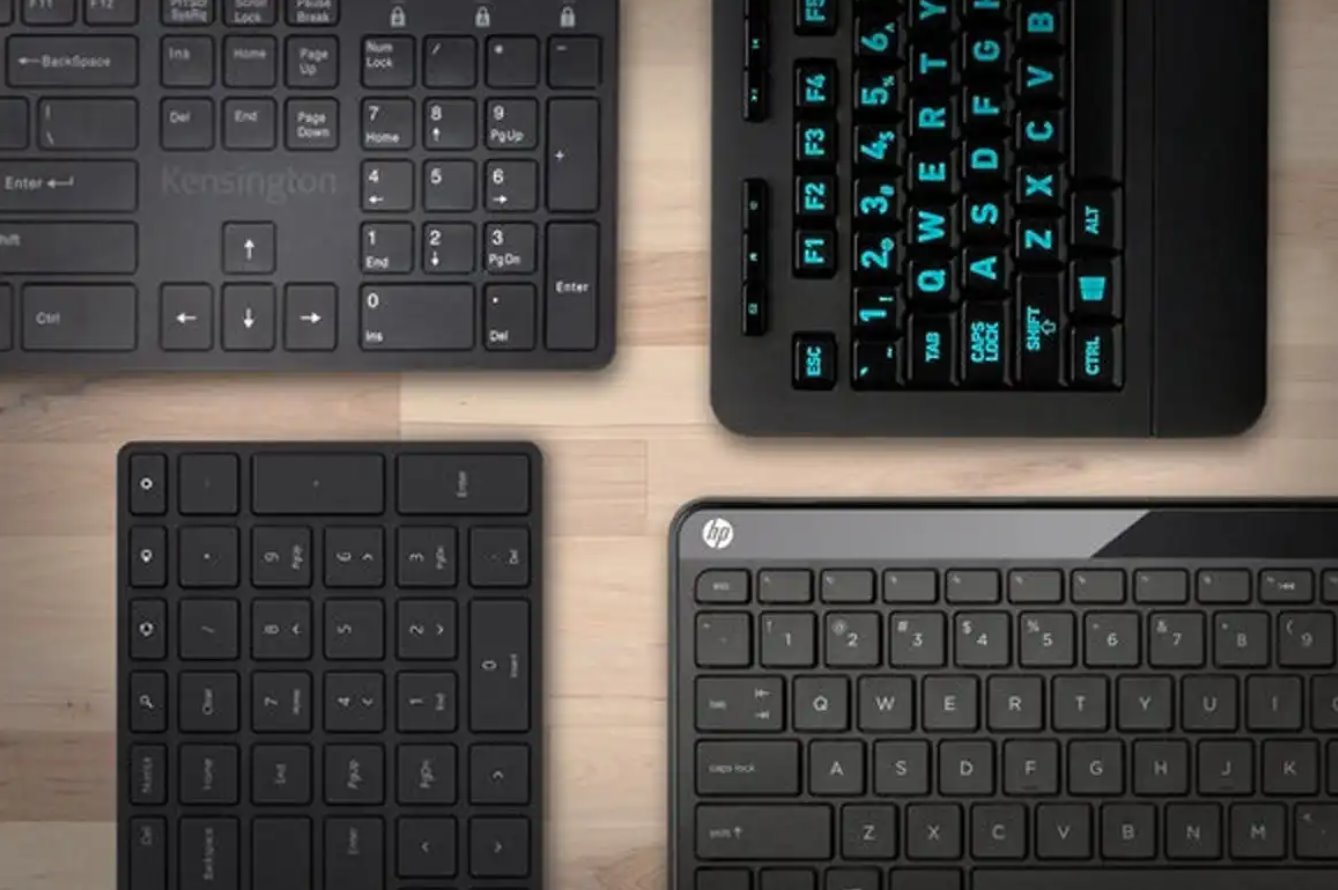Introduction
The keyboard is an essential tool for inputting text and commands into a computer, but did you know that it can also be used as a mouse? The ability to operate your computer without a physical mouse can be incredibly useful in certain situations. Whether your mouse is broken, you prefer keyboard shortcuts, or you want to improve your productivity, using your keyboard as a mouse can provide a convenient alternative.
In this article, we will explore how to use your keyboard as a mouse and navigate your computer efficiently. We will discuss the benefits of using a keyboard as a mouse and guide you through the configuration process. Additionally, we will delve into various keyboard shortcuts that allow you to perform common mouse actions such as clicking, selecting, scrolling, and zooming.
Not only will we cover the basic functionalities, but we will also explore how to move and resize windows using your keyboard. Furthermore, we will provide insights into using a keyboard as a mouse on different operating systems, ensuring that the information is applicable to a wide range of users.
Whether you are a professional who relies heavily on keyboard shortcuts or a casual user who wants to explore alternative input methods, this article will equip you with the knowledge and skills necessary to use your keyboard as a mouse effectively.
Why Use Keyboard as a Mouse?
There are several reasons why you might consider using your keyboard as a mouse. Here are a few compelling benefits:
- Convenience and Accessibility: Using the keyboard as a mouse eliminates the need for a physical mouse, providing a more convenient and accessible method of navigation. This can be particularly useful if you have limited mobility, suffer from repetitive strain injuries, or find it difficult to manipulate a traditional mouse.
- Improved Productivity: Mastering keyboard shortcuts and using your keyboard as a mouse can significantly boost your productivity. With quick access to various functions and actions, you can navigate through documents, applications, and webpages without constantly reaching for the mouse, minimizing interruptions and saving valuable time.
- Mouse Malfunctions: When your mouse malfunctions or becomes unresponsive, temporarily using your keyboard as a mouse can be a lifesaver. It allows you to continue working without being hindered by the absence of a functioning mouse.
- Preference for Keyboard Shortcuts: Some users simply prefer using keyboard shortcuts over a mouse. Whether it’s a personal preference or an ingrained habit, using your keyboard as a mouse allows you to perform actions without having to switch between the keyboard and mouse repeatedly.
By embracing the concept of using your keyboard as a mouse, you open yourself up to a world of convenience, accessibility, and improved productivity. Whether it is for personal reasons or due to specific circumstances, utilizing your keyboard as a mouse can enhance your overall computing experience.
Configuring Your Keyboard
Before you can start using your keyboard as a mouse, you may need to configure your computer’s settings. The process varies slightly depending on the operating system you are using. Here’s a general guide on how to configure your keyboard to function as a mouse:
Windows: On Windows, you can access the mouse settings by going to the Control Panel or the Windows Settings menu. Look for the “Mouse” or “Mouse & touchpad” option and select it. From there, you can enable the “Mouse Keys” feature, which allows you to control the mouse cursor using the number pad on your keyboard. You can also adjust the settings for mouse speed and other preferences to suit your needs.
Mac: Mac users can find the keyboard settings by going to the Apple menu and selecting “System Preferences.” From the System Preferences menu, locate the “Accessibility” option and click on it. Under the “Mouse & Trackpad” section, check the box for “Enable Mouse Keys.” This enables the keyboard to act as a mouse, and you can adjust the settings further to customize the behavior to your liking.
Once you have configured your keyboard settings, you are ready to start using it as a mouse. It’s important to note that the specific configuration options may differ depending on your operating system version and any additional software you have installed. You may also need to experiment with the settings to find the setup that works best for you.
Remember, if you encounter any difficulties while configuring your keyboard, refer to the user manual for your specific operating system or consult online resources for detailed instructions. With a few adjustments to your system settings, you will be able to harness the power of using your keyboard as a mouse.
Navigation Shortcuts
Once you have configured your keyboard, it’s time to learn the navigation shortcuts that will allow you to control the cursor and navigate your computer effectively. Here are some commonly used navigation shortcuts:
- Tab Key: The Tab key is a versatile shortcut that helps you navigate through different elements on a webpage or within a document. Pressing Tab allows you to move between links, form fields, buttons, and other interactive elements. To navigate backward, you can use Shift + Tab.
- Arrow Keys: The arrow keys are excellent for maneuvering the cursor precisely. The up and down arrow keys allow vertical movement, while the left and right arrow keys move horizontally. Use these keys to navigate through menus, scroll through documents, and navigate within webpages.
- Home and End Keys: The Home key moves the cursor to the beginning of a line or document, while the End key moves it to the end. These shortcuts are particularly useful when working with lengthy documents or webpages.
- Page Up and Page Down Keys: The Page Up and Page Down keys allow you to scroll through content quickly. Pressing Page Up moves the cursor up one page, and Page Down moves it down one page. These shortcuts come in handy when reading long articles or documents.
- Ctrl + Home and Ctrl + End: These shortcuts are similar to using the Home and End keys, but with the addition of the Ctrl key. Pressing Ctrl + Home moves the cursor to the top of a document, while Ctrl + End moves it to the bottom. Use these shortcuts to navigate through large files or documents efficiently.
These are just a few examples of navigation shortcuts that can help you control the cursor and navigate your computer using your keyboard. Experiment with these shortcuts, and explore the documentation or online resources for your specific operating system to discover additional navigation shortcuts that can streamline your workflow.
Clicking and Selecting
When using your keyboard as a mouse, it’s important to understand how to perform clicking and selection actions effectively. Although you don’t have a physical mouse button, there are keyboard shortcuts that allow you to achieve the same functionality. Here are some common shortcuts for clicking and selecting:
- Enter or Spacebar: In many cases, pressing the Enter key or Spacebar acts as a left-click, allowing you to select an item or activate a button. This shortcut is commonly used in dialog boxes, menus, and webpages.
- Shift + Tab: Shift + Tab is useful for navigating backward through different elements, such as buttons or form fields. Holding down the Shift key while pressing Tab helps you move the cursor and select items in reverse order.
- Ctrl + Spacebar: Ctrl + Spacebar is often used to toggle the selection of an item. If you are navigating through a list or multiple items, you can use this shortcut to select or deselect individual items.
- Shift + Arrow Keys: When combined with arrow keys, the Shift key helps you select multiple items. For example, while holding down Shift, you can use the arrow keys to extend the selection of text or highlight multiple files in a folder.
Additionally, some applications and operating systems provide specific keyboard shortcuts for right-click actions. These shortcuts generate a context menu, similar to right-clicking with a mouse. The exact shortcut varies depending on the software or system, so refer to specific documentation for detailed instructions.
Mastering the art of clicking and selecting using your keyboard is crucial for efficient navigation and interaction with your computer. Practice these shortcuts and explore the documentation or online resources for your operating system to discover additional techniques that cater to your specific needs.
Scrolling and Zooming
Being able to scroll through content and adjust the zoom level is essential for comfortable navigation and viewing. While using your keyboard as a mouse, you can utilize shortcuts to perform scrolling and zooming actions. Here are some commonly used shortcuts for scrolling and zooming:
- Page Up and Page Down Keys: As mentioned earlier, the Page Up and Page Down keys allow you to scroll up and down a page in larger increments. Use these keys to quickly move through lengthy documents or webpages.
- Arrow Keys: The upward and downward arrow keys can also be used for scrolling, but in smaller increments. By pressing the upward arrow key, you can scroll up in a document or webpage, and pressing the downward arrow key will scroll down. These keys allow for more precise scrolling.
- Ctrl + Plus (+) and Ctrl + Minus (-): To adjust the zoom level, you can use the Ctrl key in combination with the Plus or Minus key. Pressing Ctrl and the Plus key simultaneously will zoom in on the content, making it appear larger. On the other hand, pressing Ctrl and the Minus key simultaneously will zoom out, reducing the size of the content. This shortcut is particularly useful when viewing webpages or documents with small text or images.
- Ctrl + Mouse Scroll: If your keyboard supports it, you can also use the Ctrl key in combination with the scroll wheel on your mouse to perform zooming actions. Scrolling the wheel upward will zoom in, while scrolling downward will zoom out. This shortcut provides a convenient way to adjust the zoom level without relying solely on keyboard shortcuts.
Remember that the availability and functionality of scrolling and zooming shortcuts may vary depending on the software or system you are using. Experiment with these shortcuts and explore the documentation or online resources for your specific operating system to discover additional scrolling and zooming techniques.
Moving and Resizing Windows
When using your keyboard as a mouse, it’s crucial to know how to move and resize windows efficiently. In many cases, these actions can be performed using keyboard shortcuts, providing you with greater control over your workspace. Here are some commonly used shortcuts for moving and resizing windows:
- Alt + Spacebar: Pressing Alt + Spacebar opens the window’s system menu. From there, you can navigate the menu using arrow keys and select options such as moving, resizing, minimizing, maximizing, or closing the window. This combination is often the starting point for other window-related shortcuts.
- Alt + Tab: Alt + Tab is a powerful shortcut that allows you to switch between open windows quickly. This shortcut displays a list of open windows, and you can use the Tab key to cycle through them. Release the keys to switch to the selected window.
- Alt + Drag: By holding down the Alt key and clicking and dragging the window, you can move it around the screen. This shortcut is useful when you don’t have access to a physical mouse or prefer to use the keyboard for window manipulation.
- Alt + Spacebar, then R: This shortcut is used to restore (unmaximize) a maximized window. Once you open the window’s system menu (Alt + Spacebar), pressing the letter “R” selects the “Restore” option, bringing the window back to its original size and allowing you to move and resize it as desired.
- Alt + Spacebar, then M: Similar to the previous shortcut, after opening the window’s system menu, pressing the letter “M” selects the “Move” option. This allows you to move the window using the arrow keys or the keyboard shortcuts mentioned earlier.
- Alt + Spacebar, then S: Once you open the window’s system menu, pressing the letter “S” selects the “Size” option. This enables you to resize the window by using the arrow keys or the keyboard shortcuts mentioned earlier.
These shortcuts are just a few examples of how you can move and resize windows using your keyboard as a mouse. The specific shortcuts may vary depending on the operating system and software you are using. Explore the documentation or online resources for your specific system to discover additional window management shortcuts and techniques.
Using Keyboard as a Mouse in Different Operating Systems
The ability to use your keyboard as a mouse is not limited to a specific operating system. Whether you’re using Windows, macOS, or Linux, you can take advantage of keyboard shortcuts and settings to navigate your computer effectively. Here’s how you can use your keyboard as a mouse in different operating systems:
- Windows: As mentioned earlier, Windows offers the Mouse Keys feature, which allows you to control the mouse cursor using the number pad on your keyboard. You can access this feature through the Control Panel or Windows Settings menu. Additionally, Windows provides a range of keyboard shortcuts for various mouse actions such as clicking, selecting, scrolling, and zooming.
- macOS: Mac users can enable Mouse Keys by going to the Accessibility section in System Preferences. This feature allows you to move the mouse cursor using the number pad or arrow keys on your keyboard. macOS also provides a set of keyboard shortcuts for mouse actions and window control. Additionally, macOS has built-in gestures on the trackpad that mimic mouse functions, which can be helpful for those who prefer using a trackpad instead of a mouse.
- Linux: Linux distributions often come with built-in accessibility features that allow you to use your keyboard as a mouse. These features can typically be found in the Accessibility or Universal Access settings. Linux also offers a variety of keyboard shortcuts for navigating and controlling windows. Additionally, there are third-party applications and extensions available that provide additional customization and functionality for using your keyboard as a mouse.
It’s important to note that the exact methods and shortcuts for using your keyboard as a mouse may vary depending on the version and distribution of the operating system. Refer to the user manual or documentation for your specific operating system version to learn about the available options and customization settings. Additionally, online resources and forums can provide valuable insights into using your keyboard as a mouse in different operating systems.
No matter the operating system you’re using, you can leverage the power of your keyboard to navigate your computer without relying solely on a physical mouse. Take the time to explore and familiarize yourself with the available shortcuts and settings in your chosen operating system, and tailor them to your preferences for an optimized and efficient computing experience.
Tips and Tricks
Using your keyboard as a mouse can be a game-changer for your productivity and accessibility. Here are some tips and tricks to make the most out of this functionality:
- Practice and Familiarize Yourself: Like any new skill, using your keyboard as a mouse takes practice. Take the time to familiarize yourself with the various keyboard shortcuts and techniques. As you gain experience, you’ll become more efficient and comfortable with navigating your computer using your keyboard.
- Create Custom Shortcuts: Many operating systems allow you to create custom keyboard shortcuts. Take advantage of this feature to assign specific actions or commands to the keys that are most convenient for you. Customizing shortcuts can help streamline your workflow and make using your keyboard as a mouse even more efficient.
- Use Accessibility Tools: Explore the accessibility tools and options offered by your operating system. These tools are designed to enhance the user experience for individuals with disabilities but can often benefit all users. Adjusting settings such as keyboard repeat rate, pointer speed, or customizing key assignments can greatly improve your ability to use your keyboard as a mouse.
- Learn Application-Specific Shortcuts: Different applications may have their own set of keyboard shortcuts or unique ways to navigate using your keyboard as a mouse. Take the time to learn these shortcuts for the software you frequently use. Delving into application-specific shortcuts can boost your productivity and make using your keyboard as a mouse more efficient within those applications.
- Experiment with Third-Party Tools: If the built-in functionality of your operating system is not sufficient, consider exploring third-party tools or software that specialize in keyboard-based mouse control. These tools may offer additional customization options, gestures, or advanced features that cater to your specific needs.
Remember, everyone’s preferences and needs are unique, so it’s important to experiment and find the methods that work best for you. Don’t be afraid to customize your settings, create your own shortcuts, or explore alternative applications if they enhance your overall experience of using your keyboard as a mouse.
By implementing these tips and tricks, you can maximize your efficiency and productivity while utilizing your keyboard as a mouse. With practice and customization, you’ll be able to navigate your computer seamlessly and enjoy the benefits of a keyboard-centric workflow.
Conclusion
Using your keyboard as a mouse can be a valuable skill that enhances your productivity, accessibility, and overall computing experience. Whether you’re navigating through documents, browsing the web, or performing various actions on your computer, the ability to control the cursor and interact without a physical mouse can provide convenience and efficiency.
In this article, we explored the concept of using your keyboard as a mouse and discussed the benefits it offers. We covered the process of configuring your keyboard settings in different operating systems, allowing you to customize your setup to suit your preferences. You also learned about essential keyboard shortcuts for navigation, clicking, selecting, scrolling, and zooming.
We delved into the techniques for moving and resizing windows using your keyboard, providing you with greater control over your workspace. Additionally, we discussed how you can leverage the functionality of using your keyboard as a mouse on different operating systems, including Windows, macOS, and Linux.
To further enhance your experience, we shared tips and tricks such as practicing, creating custom shortcuts, utilizing accessibility tools, learning application-specific shortcuts, and even exploring third-party tools. By adopting these strategies, you can optimize your productivity and tailor your keyboard-based mouse control to your unique needs.
In conclusion, the ability to use your keyboard as a mouse provides a convenient alternative input method and improves your efficiency in navigating your computer. With practice and customization, you’ll be able to harness the power of your keyboard to perform mouse functions accurately, saving time and reducing reliance on a physical mouse.
So, embrace the possibilities and explore the world of using your keyboard as a mouse. Unlock the potential of your keyboard, enhance your productivity, and enjoy a more seamless and efficient computing experience.







